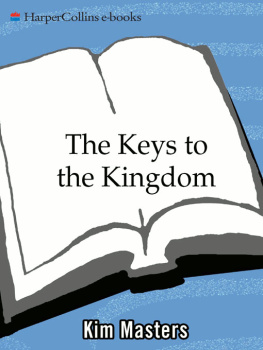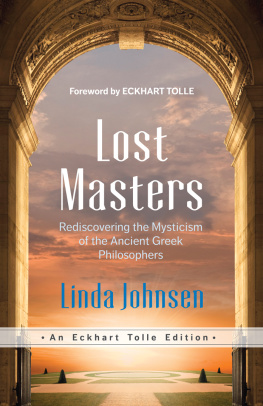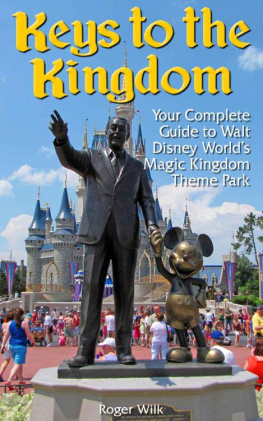O N A S UNNY April afternoon, Michael Eisner emerged from the Team Disney building, passing beneath monumental statues of the seven dwarfs who appeared to be holding up the roof. He crossed the green, manicured studio campus. The Burbank lot where the Walt Disney Company had its headquarters often seemed to be an idyllic place, with a Mickey Mouse topiary and signs outside the soundstages playfully admonishing, No lookie-loos! But today there was turmoil in the Magic Kingdom. EisnerDisneys tall, boyish-looking chairman and chief executivewas on his way to the equivalent of a state funeral. Nearly five thousand people had gathered to memorialize Frank Wells, the companys dashing president and chief operating officer. It seemed impossible to believe that Wellsso charming and full of lifewas suddenly gone. But Eisner had gotten the shocking news on Easter Sunday: Wells had been killed in a helicopter crash while on a ski trip in the mountains of Nevada.
The overflow crowd packed a cavernous soundstage and a separate room where television monitors draped with black bunting were lined up to show the services. Joining Eisner on this solemn occasion was all the Disney brass. Roy Disney, Walts nephew and the vice-chairman of the company, had flown in from his home in Ireland. The diminutive Jeffrey Katzenberg, Disneys studio chairman and Eisners colleague for the better part of twenty years, was there, as were all the other division heads and general counsel Sanford Litvack.
Hollywood stardom was out in force. Warren Beatty, who had quarreled with Wells many years earlier over the making of Heaven Can Wait, arrived with his wife, Annette Bening. Gregory Peck, Steven Spielberg, and Quincy Jones were in the crowd. So was the suited power structure of the town: Michael Ovitz, the head of the formidable Creative Artists Agency, and his rival, Jeff Berg, the chilly top man at International Creative Management. The studio gentry was there in the form of MCA chairman Lew Wasserman, Hollywoods aging godfather, and his number-two man, Sid Sheinberg. Music mogul David Geffen came, as did Warner cochairmen Bob Daly and Terry Semel. Dozens of people from the other parts of Wellss life were present, toopoliticians, environmentalists, adventurers.
Eisner still had not fully absorbed the horrifying news. When he rose to speak, he suddenly felt the despair that had not hit him in the flurry of activity following the news of the accident. His voice breaking with emotion, Eisner addressed the crowd. I spoke more often with Frank than with any other single person over the last ten years, he said. Over those ten years we never had a fight, never had a misunderstanding, never had as much as a disagreement. I was never angry with himuntil last Sunday. And I was angry at Frank because he was not around to help me deal with this difficult situation. I miss him terribly.
Eisner had indeed suffered a serious loss. At a striking six feet four inches, the sixty-year-old Wells was an icon in the entertainment industryan attractive, craggy, educated, and wealthy man. He and Eisner had engineered one of the most dazzling corporate turnarounds in history. Were going to ride that mouse into the ground, Wells had told his friend documentary filmmaker Mike Hoover when he had taken the job at Disney in 1984and he had been as good as his word. Disney had awakened from its slumbers and smashed its own earnings records quarter after quarter.
At the memorial service, Clint Eastwoodwho had been on the ill-fated ski tripspoke about his long friendship with Wells. They had known each other since the days when Wells was a young lawyer and remained close when he became a top executive at Warner. Eastwood recalled settling the terms of the deal to make Dirty Harry with a tennis match. Warner chief Bob Daly compared Wells with Clark Kent, a tall unassuming man with glasses, but Superman underneath. Robert Redford, who shared with Wells a passionate interest in protecting the environment, also spoke. Carrying skis onstage, Wellss twenty-eight-year-old son Briant asked the crowd to sing a rendition of Hey, Judea song that his father had been singing on the slopes on the day of the accident that claimed his life.
Many were brought to tears by a short video celebrating Wellss adventurous life. There was Wells skiing and taking a spill. Wells in full scuba gear, floating in a tank at Disney World, with Eisner calling through the glass, Frank, you know there are sharks in there! (In a cloud of bubbles, Wells replied through his mask, Thats not part of my deal!) There was a gag reel, made for a corporate event, showing Eisner shoving a cream pie in Wellss face. Next came a moving photo montage of Wells as a boy, Wells with his own children, and Wells during a daring 1981 attempt to become the first man to climb the tallest mountain on each continent. (Despite a lack of experience or skill, he nearly succeeded.)
In 1984, Wells had teamed up with Eisner to run the then-flagging Disney. Most entertainment types who knew Wells thought his modesty was illuminated when he relinquished the chance to be chairman so that Eisner could take the role. Few understood that Wells, the businessman, knew he couldnt save Disney without a creative partner. And his first choice, the ambitious and talented Michael Eisner, had refused to share the number-one spot.
But some who worked with Wells thought he believed, with some justification, that he was the one who kept Disney aloft, in part by keeping Eisnerfrequently impulsive, often duplicitousin check. Frank was actually the moral compass, says Pete Clark, a veteran Disney executive in charge of partnerships with outside companies. He was the Jiminy Cricket.
Certainly Wells kept things on a more even keel than Eisner could have. Hadnt he played a key role in getting financing for Disneys movies? And wasnt Wells the one who soothed the Imagineersthe high-strung designers who created the theme park attractionsmany of whom lacked confidence in Eisner? These were only some of the internal relationships that Wells had to smooth over, and he had done it brilliantly. Most important, Wells had just finished bailing Eisner out of the gravest crisis of alla disaster that Eisner had walked into with considerable arrogance and now feared could cost him his jobthe sinkhole known as Euro Disney.
The Disney Orchestra played Climb Every Mountain. The choir from the First African Methodist Episcopal Church sang. Yet even as Wells was being laid to rest, the entertainment industry was asking questions about Disneys future. There were ripples of fear throughout the company. In the quirky Imagineering division, some employees who were leery of Eisner believed they had lost their godfather. Outsiders, too, who had turned to Wells to mediate their disputes with Eisner worried about what would come next. Those closest to the company were not nearly as sanguine as the Wall Street analysts who contended that Eisner had become a seasoned leader and that Disney would not suffer for the loss of Wells.
How would Eisner replace the man who had helped him build Disney from a foundering $2 billion company to a $23 billion juggernaut over the previous decade? Eisner had moved quickly to stop speculation. The Monday after Wellss death, he had decided to hold the regular staff meeting. There, he announced that he was taking over the title of president. The message was intended to soothe anxious shareholders. But to one man, there was nothing soothing about it.

















